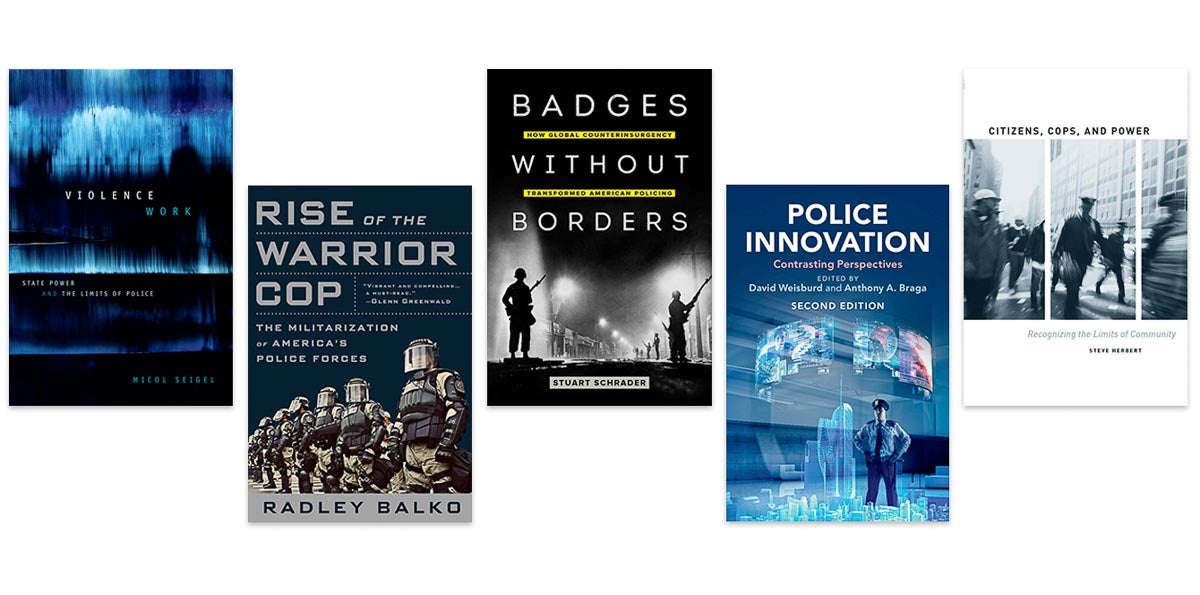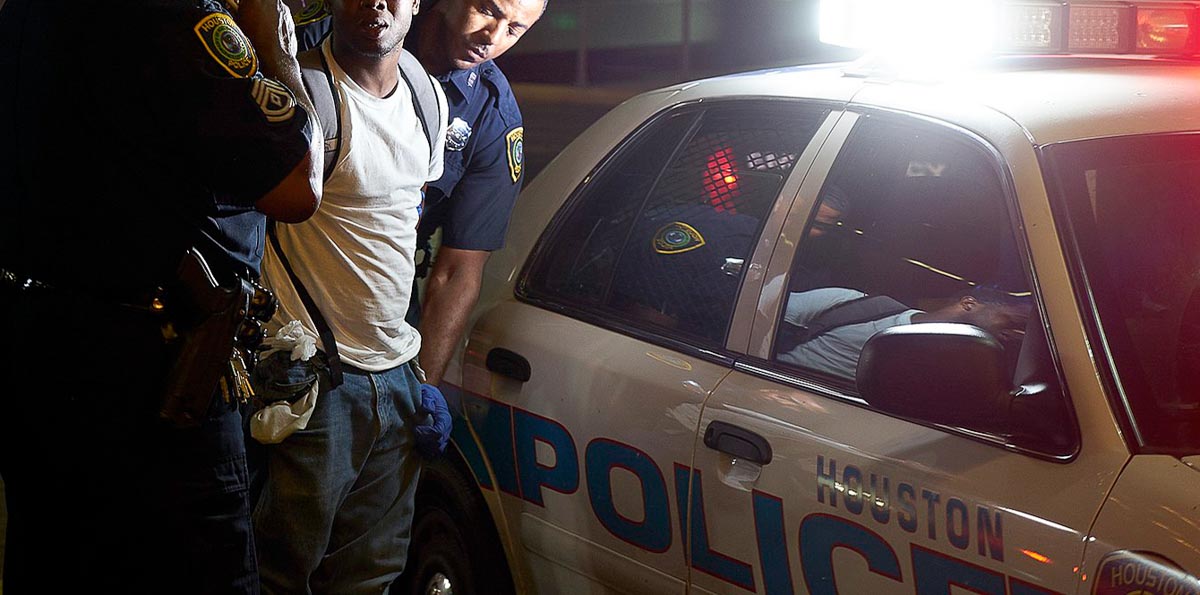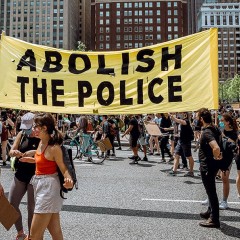George Floyd’s killing sparked arguably the largest wave of protests that the U.S. has experienced in over 50 years. I started working as a research fellow for the Kinder Institute in June, three weeks after the protests began and five weeks after formally receiving my Ph.D. in Urban Planning from the University of Illinois at Urbana-Champaign. My doctoral research was about urban planning and the police: how police shape city plans, how city planning departments’ work involves the police and how large urban not-for-profit institutions like universities use the police to shape their surrounding neighborhoods.
My dissertation focused on Atlanta. Atlanta and Houston are two Sun Belt boomtowns with a lot in common. Many of their similarities were highlighted in the Kinder Institute’s recent report “The Urban Sun Belt: An Overview”: relatively strong (pre-COVID-19) economies, a large wealth gap and splintered regional governance, among others. They also share recent high-profile police killings — the fatal police shooting of Rashard Brooks at an Atlanta Wendy’s and, in Houston, a controversial no-knock warrant that left two people dead, four officers wounded and one HPD officer charged for fabricating evidence.
For any social scientist, the Ph.D. process involves reading hundreds of books and research articles before even beginning one’s dissertation research. In the wake of these protests against police brutality and systemic racism, journalists, publishers and academics have compiled many reading lists about urban planning and racism, anti-racism, prison and police abolition, police alternatives, etc. The trend was popular enough to spur a reading list backlash. In sifting through the bonanza of reading list content, one list I did not see was one focused on critical studies of police work. We know how police work can amplify racist outcomes, but less about what that work is.
This blog post and a follow-up post are my addendum — these are reading lists informed by my studies and presented by someone who also is familiar with urban planning and the current police abolition/reform debates. This post will focus on police institutions, while the second post will focus on police culture. I chose these articles and books specifically for their focus on police work, that is, what exactly the cops do on a day-to-day basis, and the fundamental content of patrol policing as an occupation and activity.
They differ from many other popular contemporary criminal justice books, such as Michelle Alexander’s “The New Jim Crow” or Ruth Wilson Gilmore’s “Golden Gulag,” which broadly focus on how the contemporary criminal justice system harms Black communities in America. While most reading lists (such as those referenced above) focus on policing and systemic racism, this one mostly contains books about policing’s banal day-to-day operations. I think these readings provide crucial knowledge for understanding contemporary policing in the U.S., and for identifying what it is about police institutions that leads to the outcomes described in the books above.
While “academic,” these suggestions are relatively accessible to a general audience. There is no Foucault here. So, to start:
“Popular Justice: A History of American Criminal Justice,” by Samuel Walker (2nd edition, 1997)
Walker’s book remains my go-to source for a history of the U.S. criminal justice system, covering the colonial period until the near present. His easy-to-read book covers roughly 400 years of history, addressing the major landmarks (e.g., the first police forces in early 19th-century cities, the early prisons, the formation of the FBI and other federal agencies) and major figures (such as August Vollmer, the Berkeley, California, police chief who spearheaded the police reform movement in the early 20th century and popularized what are now common police practices, like car patrols and departments organizing around a military rank system).
Reading Walker, one appreciates how diverse the U.S. police are, as he illustrates the founding and development of our many, many police institutions, like city police, county sheriffs, highway patrol and university criminology departments, all of which have unique histories in different U.S. regions. Walker teaches us that the police in this nation are not a singular state agency with a coherent and legible purpose, but rather a group of diverse institutions with their own idiosyncratic mandates and institutional lineages. There are over 12,000 local police departments in the U.S. (Unlike the U.S., most OECD “developed” countries do not even have local police departments; most EU countries only have roughly 100 departments, mostly organized at the state/territorial level. The idea of a small-town police department is very, very strange to most of the world).
The book’s main thesis argues that making the police more bureaucratic, and more accountable to centralized federal authority, has made them more fair and just. This is a theme Walker identifies throughout the country’s history and across these many different agencies. He admits this point is counterintuitive: conventional wisdom dictates that the police need to be more locally accountable. This thinking drives current reform debates, as citizens push for community accountability of their local police forces (e.g., through citizen review boards or residency hiring requirements). Walker flips this equation, showing how federal and state oversight and reforms have successfully rendered more just outcomes, particularly in how police treat non-white Americans.
If considering a purchase, note that the 2nd edition contains many important updates. The book remains out of print and used copies are expensive. Oxford University Press should consider a reissue. Check your local library, too.
“The Condemnation of Blackness: Race, Crime, and the Making of Modern Urban America,” by Khalil Gibran Muhammad (2010)
This book deviates from my other suggestions — it’s less about police work and more about urban history — but it complements “Popular Justice” so well that I wanted to include it.
Muhammad’s book centers on policing, crime and racism in the urban U.S., from the late 1800s until roughly 1930. He focuses on northern cities, particularly Chicago and Philadelphia, as the powers-that-be in those cities reacted to Black migration from the South.
Muhammad describes how “urban Black criminality” arose as a popular policy problem in this specific era, and charts the rise of this discourse and the policies and institutions that came from it, including the modern U.S. crime statistics infrastructure. Ultimately, he argues that the idea of the “Black criminal” shaped how modern U.S. cities evolved, as the perceived troubles in Black neighborhoods were used to justify not only aggressive policing but later policies like slum clearance and redlining.
Of particular import for this discussion are the early chapters on crime statistics. He goes deep into the work of Frederick Ludwig Hoffman. As an employee of the Prudential Company in the late 1800s, Hoffman was an early statistician who innovated ways for analyzing and aggregating crime statistics. His work — and that of many early statisticians — is considered reprehensible by modern standards. He argued that Black neighborhoods had more crime due to inherent qualities about Black people.
Hoffman, whose work proved influential, was one of the first academics to argue that Black migration, urban growth and crime were linked phenomena: Cities that gained more Black residents produced more crime. Crime statistics became a benchmark by which the quality of cities and neighborhoods were measured. To this day, when people describe a neighborhood that is “bad,” they often will first discuss local crime. Popular discourses imagine rural (and whiter) areas as safer, despite contrary evidence.
Muhammad charts how this crime/urban discourse informed the work of foundations, social scientists and the police. He concludes the book with a chapter on the Wickersham Commission, a 1931 national policing study commissioned by President Herbert Hoover, which largely ignored racial bias in policing, and the formation of the Uniform Crime Reports (UCR) in 1930. The UCR became a nationwide, federally managed database of crime that cemented diverse white ethnicities into a monolithic “white” identity to be measured vis-a-vis Blackness and Black criminality. Local departments must regularly report statistics for the reports, which are maintained by the FBI, and they remain the major nationwide source for crime data.
I appreciate how Muhammad’s book does historical work to uncover the ideologies beneath our commonly used statistics. This is not to say “numbers are bad” — I’m a quantitative researcher, after all — only that it’s important to remember that the data are yoked to the institutions and norms that produce them. A mugging happening somewhere in Houston doesn’t magically populate a UCR spreadsheet; rather, an HPD officer needs to hear a report of that mugging. Crime data don’t reflect actual instances of lawbreaking because most crimes — aside from homicides — aren’t reported. Criminologist Peter K Manning and other scholars, including geographer Brian Jordan Jefferson, emphasize that crime data don’t measure crime, they measure policing. A critical mind should question the data.
“The Policing Web,” by Jean-Paul Brodeur (2010)
If I had to pick just one book to understand policing per se, it would be this one. Jean-Paul Brodeur was an accomplished criminologist whose lifework culminated in this book. He died a few months before its publication. Like “Popular Justice,” “The Policing Web” centers on the institutional diversity of police. It’s Brodeur’s attempt to answer the question: “Who are the police?”
Brodeur wants us to consider all the agencies that do “police” work, a huge array of groups containing not only municipal cops (who dominate the popular imagination of police), but also county sheriffs, DEA undercover operatives, international and domestic spies, private security officers and mafioso strongmen running protection rackets, among many other examples.
Brodeur attempts to thread this “web” together and provide a fundamental, essential definition of “police” (or “policing agents,” to use his term). Unlike prior scholars, such as Egon Bittner or Max Weber, Brodeur does place the police’s use of violence at the center of his definition. Instead, he shows how many police agents accomplish their goals without even having the capacity for violence (instead using surveillance, spying, record-keeping and other technological work). His definition, which he presents at the end of the first half of the book, states that all of these police agencies are defined by their role in maintaining a politically negotiated “order.” “Order” is more fundamental to police than “law,” to flip the TV show title, and violence is but one tool the police can use to support “order” (whatever that may be).
Brodeur then attempts to describe all of the many agencies that could be called “police” under this definition, which also code enforcement, military contractors and even employers’ human resources departments. From Brodeur, I learned important lessons about the overall messiness of police. It is hard to discern a single “point” to policing, because even within a single neighborhood, diverse public and private police agencies operate with different strategies and goals, and take orders from different bosses.
The Kinder Institute’s research on Harris County’s police jurisdictions illustrates a similar point: Within Harris County, Houston, Sheriff and Constable police, as well as 29 police agencies representing smaller municipalities are operating. This doesn’t include the numerous state, federal and private agencies also doing patrol work. Services inevitably overlap and conflict, and Brodeur helps us make sense of what that overlap means.

Others to explore:
The major policing paradigms
The second half of the 20th century featured many trends and innovations in policing. The well-known strategy of “broken windows policing” represents one such “innovation,” but there are others such as problem-oriented policing, hot-spots policing, COMPSTAT, community policing and many others.
“Police Innovation” covers all of these paradigms, with chapters written by both advocates and dissenters. The recent events have spurred calls for more “community policing,” including here in Houston. Steve Herbert’s book “Citizens, Cops, Power” is a critique of that topic. In short, “community policing” often falls short because communities can’t agree on what “community” means. Officers attend community meetings in a quasi-therapeutic way, but enact little meaningful change in their daily work.
Police militarization
The sight of thousands of officers decked out in military hardware at protests has prompted an important question: Where did all of this come from? (This point has been explored in one previous Urban Edge piece, which quoted research showing how more militarized police forces use more force against citizens). Two recent critical books help answer that question are “Violence Work,” by Micol Siegel, and “Badges without Borders,” by Stuart Schrader.
Both books do historical work to link the militarization of local police departments in the 20th century with U.S. Cold War-era counterinsurgency and espionage efforts, particularly in Vietnam. (This Vietnam connection was likewise evident within the Chicago police’s torture cases, the subject of “The Torture Letters,” by Laurence Ralph).
Radley Balko’s “Rise of the Warrior Cop” is another recent treatment of police militarization. Written by a non-academic, the book spends more time analyzing specific recent policies that have enabled police departments, such as Houston’s, to purchase military equipment.


